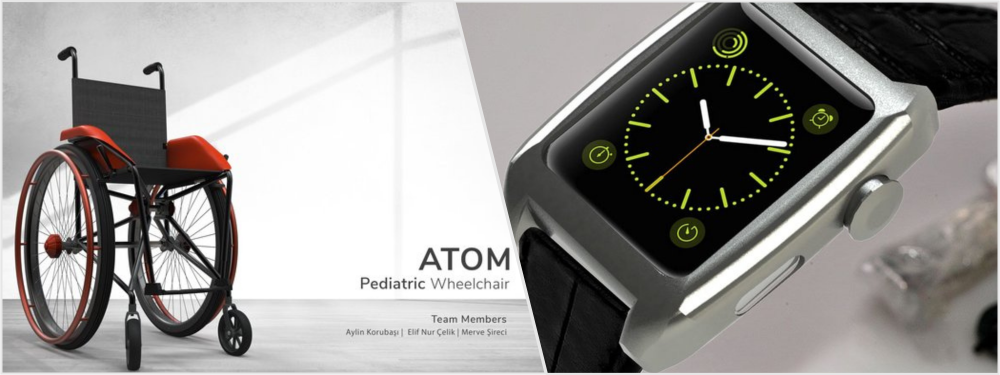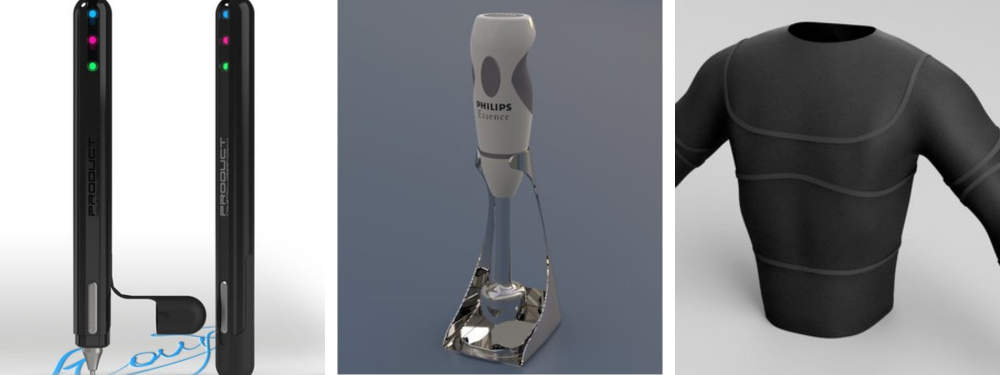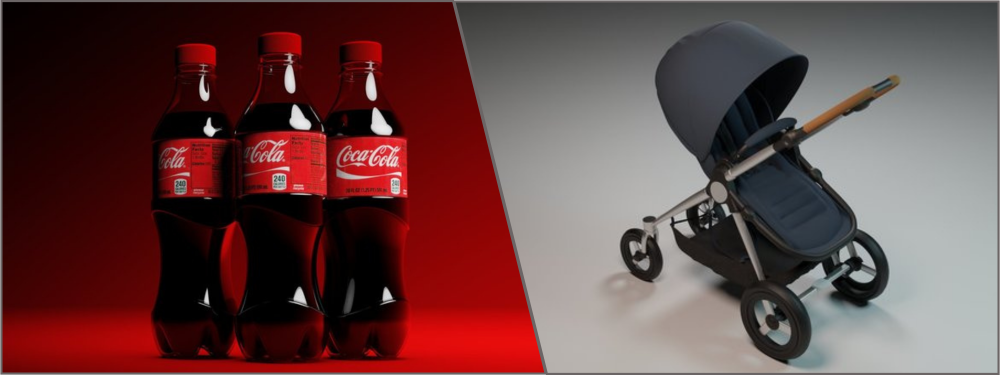Most entrepreneurs and inventors strive to create profitable inventions. However, to achieve this goal, there are two unique paths you need to choose from: product licensing and manufacturing.
It helps to consider several aspects when deciding between product licensing and manufacturing. One of these two avenues may prove more lucrative or beneficial than the other, depending on your long-term goals for your company’s new product invention. Freelance product design services are available for companies needing help with new invention ideas, 3D Modeling, patenting, and more.
What is product licensing?
Product licensing services involve proving your company’s new invention. During this stage, your work must answer why your product should be licensed and invested in by another company. Your goal is to persuade a company to pay you a royalty on the wholesale of your invention. But before the company does so, they will want to ensure that you have a worthy product that can be successful.
You can develop a concept drawing or prototype to prove your product’s potential success and worth. If your product uses existing technology without proof that it works, you should develop a sell sheet of your new idea. The sell sheet must include your new strategy, fresh approach, or anything else that sets your product apart from the existing similar ones. Remember that you are trying to sell the benefit of your new idea and not its prototype. Consulting with a new product development expert can provide valuable insights and strategies for effective market positioning.
Your idea also needs some intellectual property protection, although filing for the patent doesn’t have to consume your resources and time. You can file a provisional patent to provide temporary protection without significant expenses. You can check online for helpful resources on patent filing without a legal team’s assistance.
Ensure legitimacy with a professional website, letterhead, business cards, and a dedicated phone line for your business. Ensure you also understand the importance of the steps for manufacturing required for your invention’s design and production so you can talk about it to prospective licensees and handle implementation issues if they arise. You can complete the process in less than 30 days if you work efficiently, with the assistance of invention design help & freelance product development services, for approximately $500.
RELATED: Manufacturing or Product Licensing? The Route to Selling Your Invention
What is product manufacturing?
Product manufacturing is a process where you take your prototype and turn it into an actual product ready for production. It can include die-making, tooling, and others. To get to the product manufacturing stage, you’ll need to attend trade shows to showcase and introduce your product to your target market, set up an office, and invest in inventory.
You must also develop a marketing and advertising plan to introduce your product and entice customers into purchasing it. The entire process may take up to a year, and even with a low-cost invention, the estimated startup cost is $250,000.
RELATED: How to Calculate The Total Manufacturing Costs for a New Product

How to license your company’s invention
The moment the patent owner decides to license an invention, they agree to let another party buy the rights to the intellectual property. The patent licenses are for a specific timeframe, and you receive the agreed compensation for licensing the rights to the invention.
The payment for patent licensing sometimes comes in a payment sequence called royalties. The licenser here is the patent owner, and the licensee is the party that pays for the rights to the patented invention. The party that licenses the invention usually does so to manufacture and market it.
RELATED: Product Design Guide for Freelancers Developing an Invention
How to manufacture your company’s invention
It is common for patent owners to opt to manufacture their new invention themselves instead of licensing the manufacturing rights to another party. It means that the patent owner will continue to control the invention fully. At the same time, they will also be responsible for coordinating the entire manufacturing process either overseas or in their own country.
If you decide to manufacture your invention, you have to hire a company that will build or create the invention. It is an appealing option for inventors with specific visions for their invention to maintain complete control of the process. But if your company decides to manufacture your new invention, you also need to accept the costs and risks of this process. Prototype manufacturing experts can help navigate these challenges effectively.
RELATED: How Much Does it Cost to Produce a Product? Bringing Your Invention to Market
What are the benefits of licensing your company’s invention?
The following are benefits you can enjoy if you sign a licensing agreement for your company’s invention:
- Income from royalties
- Inventor requires less involvement in the whole process post-invention.
- Reduced risk
- The chance to concentrate on future inventions while someone else markets the previous idea.
- Save expenses on prototype services
What are the drawbacks of licensing your company’s invention?
One of the most significant downsides of licensing a patent is that the inventor will have to surrender the marketing and production of their invention. When another party acquires rights to your company’s invention, they may opt to change its name, pricing, or appearance. Negotiating the licensing agreement can be intimidating and complex, especially without the assistance of an experienced lawyer.
Other licensing drawbacks include launch delays, difficulty finding someone to license the patent, and manufacturing difficulties. It may also result in legal issues and loss of money and time if something goes wrong with the licensing agreement. Seeking guidance from design patent services for USPTO patent help can help safeguard your intellectual property and navigate potential legal challenges more effectively.
RELATED: How Much Does it Cost to Produce a New Product Design or Invention Idea?

What are the benefits of manufacturing your company’s invention?
The patent owner can benefit if they handle their invention’s manufacturing process. Most of the time, inventions that investors manufacture make it to market much faster if the production is appropriately managed. The inventor maintains control over the invention’s future. There is often more profit potential for the inventor if they manufacture the invention themselves instead of just receiving royalties.
What are the drawbacks of manufacturing your company’s invention?
It would help if you also considered several drawbacks of manufacturing or licensing your company’s invention. For example, it is often cheaper to develop a virtual prototype than an actual one, and manufacturing, however, calls for a physical prototype.
Aside from this, starting an inventory of your new product is also very expensive. Some inventors also look for investors who can help them cover the initial costs of the product manufacturing process. The practice allows the inventor to retain creative control and get some assistance with the necessary expenses. In addition, corporations are a great option since they allow for several investors, although they take money and time to start. Engaging freelance prototype design engineering services can further optimize the development process and enhance the quality of your product.
RELATED: An OEM’s Guide to Product Design and Manufacturing Prototypes
Licensing vs. manufacturing. What is the best route to take?
Licensing your product requires less money and time, but the potential payoff is smaller. Once you license your invention, you can work and live anywhere. Licensing requires resourcefulness, creativity, an understanding of manufacturing, and the ability to sell.
A more significant investment of money and time is required to manufacture a product, but it can also produce higher returns, not to mention that you can accomplish it on your terms. Unlike licensing, manufacturing process designers involve a higher risk but can succeed if you do it properly. The process also requires a person to have all the skills necessary for running a small business, such as inventory control, understanding of manufacturing, sales, and finance.

Wrapping it up
Considering the positives and negatives of product licensing or manufacturing inventions, it is easy to see that the manufacturing process is time-consuming and complicated. Many inventors find it worth the effort to maintain control of their products. Manufacturing provides a higher reward potential but also comes with more risks. On the other hand, most of the time, licensing has a lower risk and a lower cash potential.
While neither product licensing nor manufacturing is inferior nor superior to the other, each requires a separate and distinct set of abilities and skills. Always play to your strengths and pick the most suitable path for you!
How Cad Crowd can assist
Make informed decisions for your company’s invention with Cad Crowd. Whether you’re considering product licensing to leverage the expertise of established brands or taking the leap into manufacturing to retain control over production, Cad Crowd’s industry professionals are here to guide you. We provide tailored solutions to help you navigate the complexities of product licensing and manufacturing, ensuring the best path for your unique invention.
It’s time to take your invention to new heights and unlock its full potential. Request a free quote to explore the best options for your company’s success.
